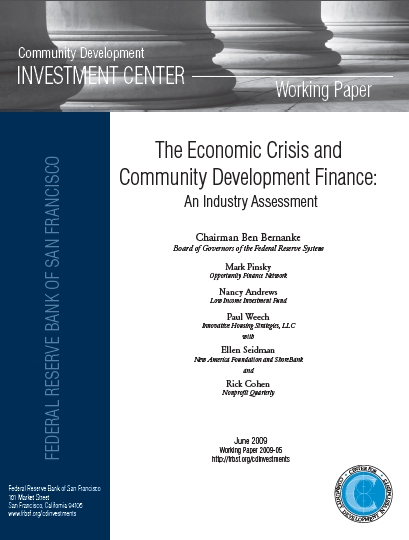For thirty years, the community development finance industry—banks, credit unions, loan funds, community development corporations, venture funds, microfinance institutions—has quietly provided responsible, well-designed and wellpriced credit to lower-income people and communities. These entities have provided this credit with the support of the federal government, through the Community Development Financial Institutions Fund, the Low Income Housing and New Markets Tax Credits, the Small Business Association, the U.S. Department of Agriculture, and various housing and facilities development programs. The industry has also been supported in its efforts by mainstream institutions such as banks and insurance companies, most frequently motivated by the Community Reinvestment Act (CRA) or by concern that CRA-like obligations would be imposed. Philanthropic foundations and supporters and state and local governments have also played their parts. The result: a community development finance industry that has survived and even prospered during recessions and political downdrafts. But the field, and the communities, businesses, and individuals it serves, are hurting now, and fearing bigger hurt. This paper by Mark Pinsky, Nancy Andrews and Paul Weech examines this situation and focuses attention on what needs to be done.
A major theme of the paper is that time is of the essence. Even before the current meltdown, the industry was stressed by years of federal cutbacks and a changing dynamic that made bank funding more difficult to obtain and more expensive. The paper recommends longer-term steps, such as establishing a fiduciary duty for all financial institutions to invest in “opportunity finance.” However, the authors agree that capital, liquidity, well-priced debt, and financing partners are
needed now. Delay may well mean the infrastructure of community finance, especially for housing and particularly in hard-hit and rural areas, will die before help arrives.
The paper makes three major recommendations, in a variety of contexts and forms. Policy, particularly at the federal level, is critical on three dimensions:
- making funds available (capital, liquidity, andproject finance),
- getting that money on the street fast,
- establishing and enforcing obligations on the part of all financial institutions to support community finance.
Download the PDF
Source





